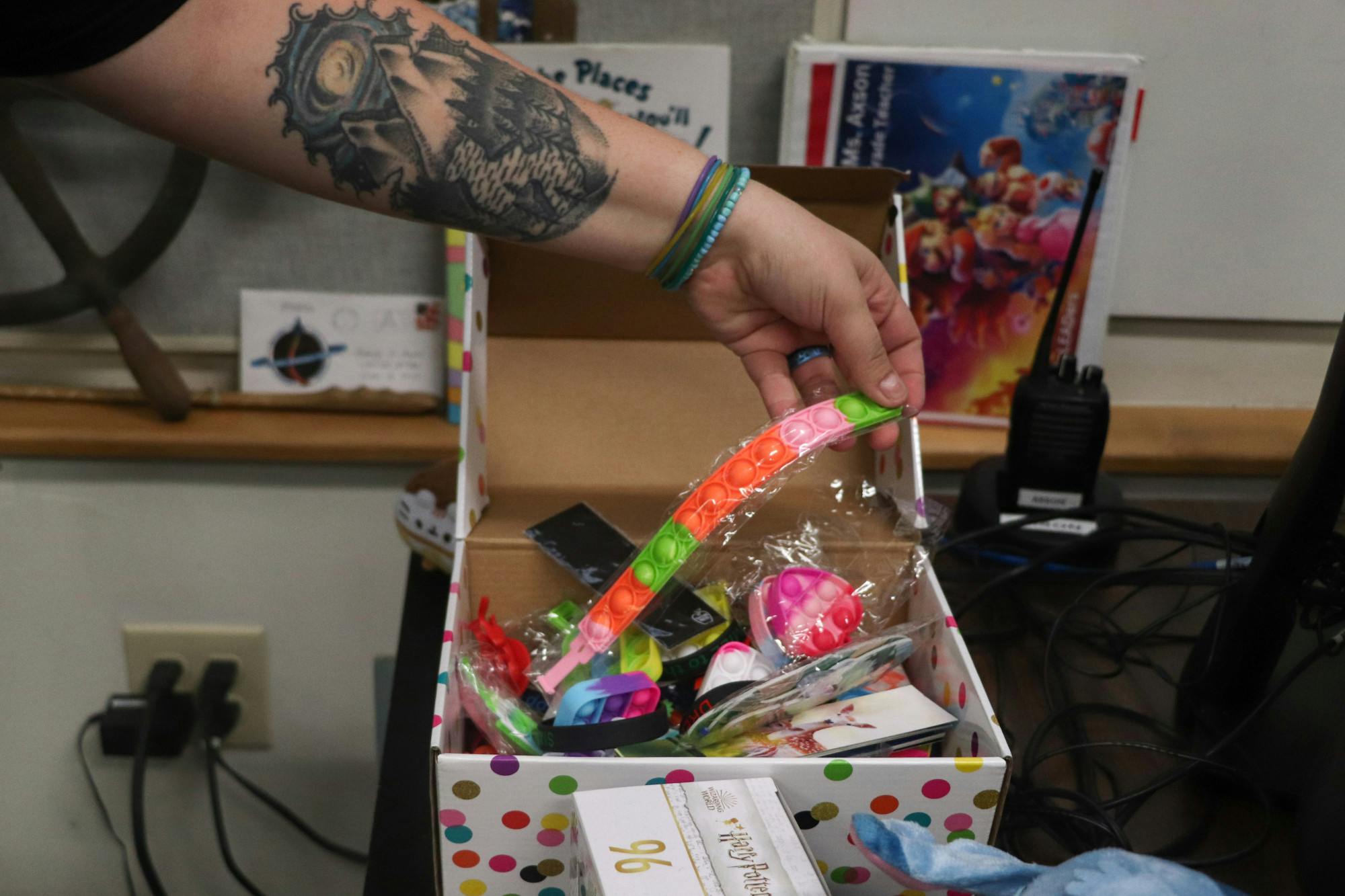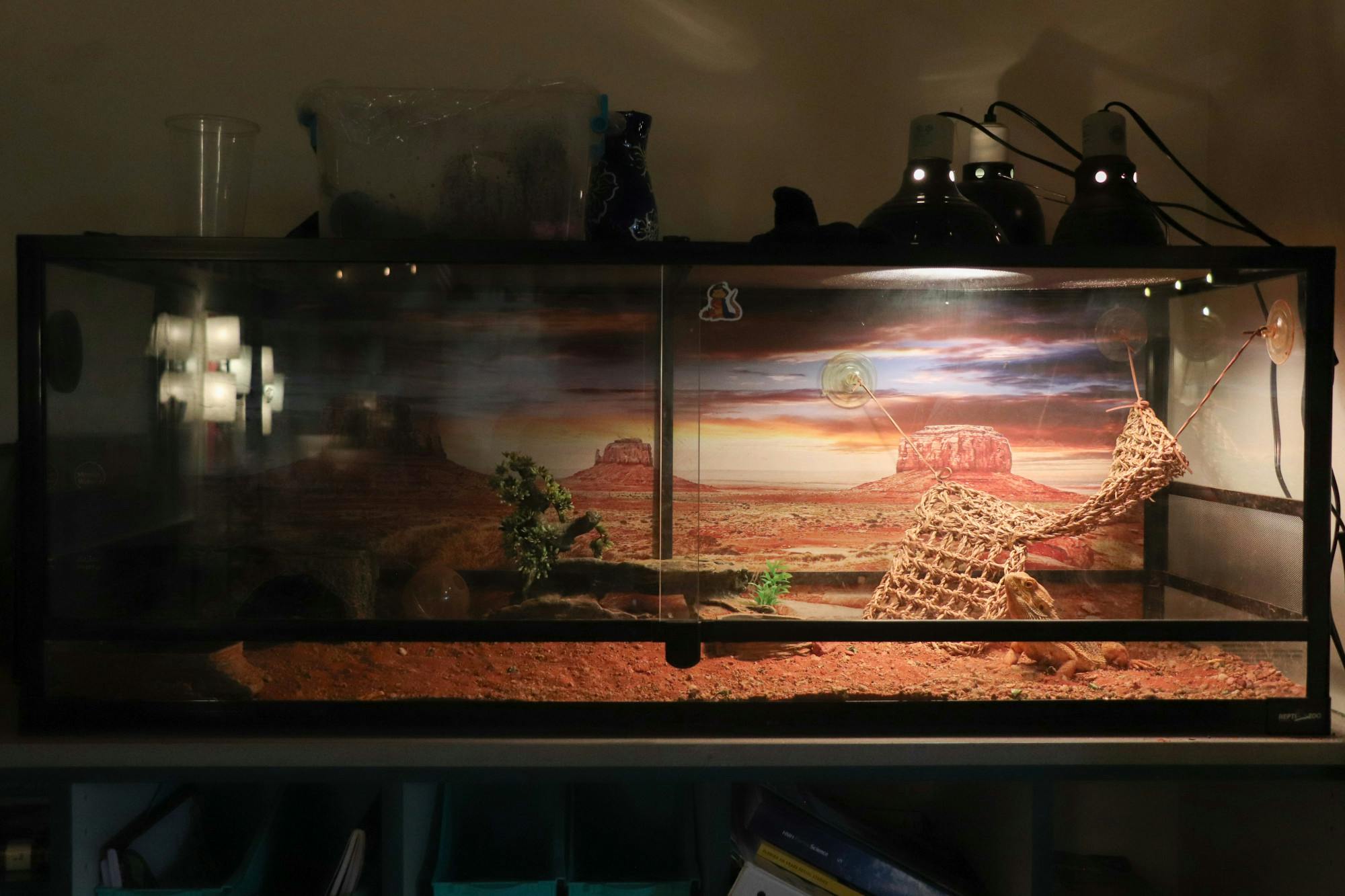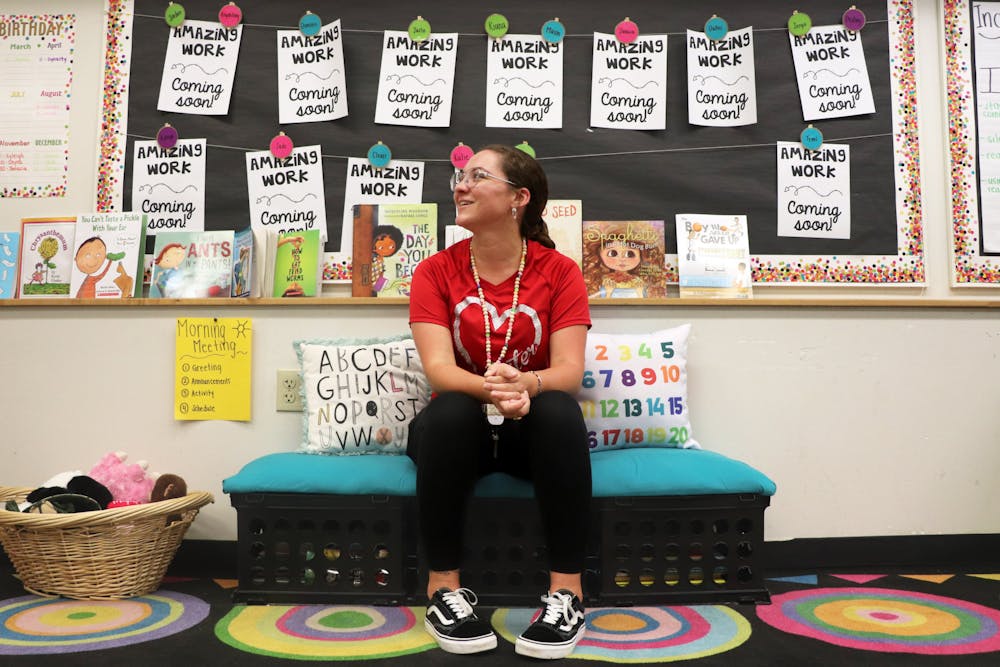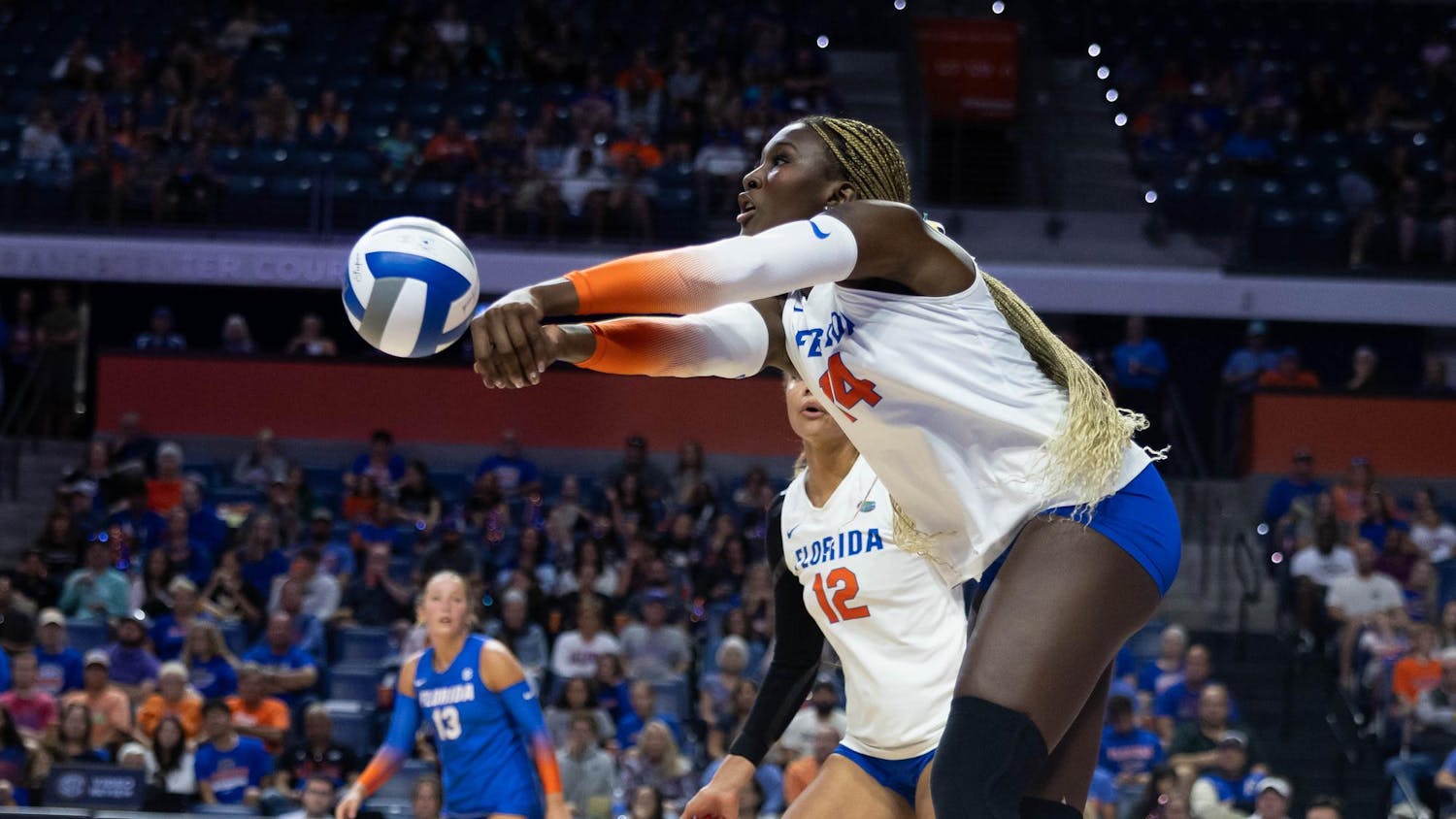As a fifth-grade teacher, Ashley Axson knows what makes her students pay attention in class: the treasure box.
Slime, pop-its and candy are best-selling treasures right now, so Axson keeps a steady supply in her room — in fact, the chance to win them might be the only reason some students come to class, she said. But to keep the prizes coming, Axson spends more than $1,000 out-of-pocket per year.
“Every single detail that goes into building a classroom comes out of a teacher’s wallet,” she said.
Teachers across Alachua County Public Schools and throughout the country spend from hundreds to thousands of dollars each year buying school supplies, class decorations, cleaning supplies and snacks for their students — most of which can’t be purchased using district-allocated supply funds.
Among the ACPS teachers who talked to The Alligator, the average amount spent out-of-pocket was between $1,460 and $2,500, with the lowest estimate being $100 and the highest being $10,000.
Aside from teaching at Stephen Foster Elementary School, Axson took two more jobs — one in retail and one as a server — to help her afford classroom supplies and her personal finances.
“While I know that's my active choice to take on those extra jobs, it's so I know I can do what I need to do for these kids,” she said. “Because they do deserve all of the rewards.”

Paying for the essential non-essentials
Snacks are the biggest expense in English teacher Jordan Marlowe’s $1,000 budget, he said.
Marlowe, who works at Newberry High School, has noticed students learn better when they’re not hungry, he said, so he stocked up on pop tarts, juice boxes and other goodies. But once word got out that he had food in his classroom, students started coming to him for snacks regardless of whether they had him as a teacher.
“It is really, really hard for me to say no to somebody who is hungry,” he said. “That's just a terrible feeling. But it was getting so expensive.”
The district provides teachers with a Class Wallet account, which allows them to spend about $300 on certain approved supplies, ACPS spokesperson Jackie Johnson said. Teachers confirmed they receive Class Wallet money, but estimated its value at about $250.
Each school also allocates about $200 — an amount that varies among schools — from its supplies budget to each teacher. However, all supplies bought with these funds must be approved by school administrators.
Prizes, decorations and snacks are considered non-essential and therefore are not covered by schools. If teachers want to purchase from sites other than the county options, or if their purchases are rejected, they are not reimbursed for the costs.
As a result, teachers have resorted to buying what they need out of pocket.
One solution to the lack of flexibility on district-approved purchases would be to reimburse teachers for supplies of their choice up to a certain dollar amount, Marlowe said.
“It becomes onerous,” he said. “If I need pencils today, or tomorrow, I'm just gonna go get the pencils tomorrow, and then if I can't get reimbursed for it, well, I just can't get reimbursed.”
The cost of comfortable
Another option teachers turn to is supply drives and wish lists, where class parents can donate pencils, tissues and other must-have items.
Alayna Schwenker, a third-grade teacher at Stephen Foster, had some of the books in her class library donated to her, she said. Others, however, she bought herself because she wanted to teach specific lessons.
Schwenker also made most of her posters and paper decorations herself — with the help of Pinterest — to save money, including the DIY-ed rainbow paper flowers that border her bulletin boards and the storage box seats in her class library.
In total, she estimated she spends $100 to $200 on supplies per year.
“I feel like the money can be overwhelming at points,” she said. “But then you're also choosing to do that, you know? So I feel like there's not a point where I'm like, ‘Oh, it's too much.’”
Having previously taught at a school in North Carolina, Schwenker noted she gets much more monetary help from ACPS than she did from her last school, where she was reimbursed for only up to $100 worth of school supplies.
First-year teachers might spend more money than their seasoned peers, as was the case for second-grade Glen Springs Elementary School teacher Ryan Pacheco.
In his first year, Pacheco stocked up on posters, folders and a couple hundred books for his personal library, which altogether racked up a $500 to $600 price tag. He wanted to make the classroom feel comfortable and welcoming, something he wished he had growing up.
“I want to make sure that the environment that they have is one that they want to go to, especially since they see me 180 days of the year,” he said. “Out of those 180 days, they at least enjoy like, 120 of them.”
In the years since, he’s reused class decor and learned which materials are necessities, so his spending dropped to between $200 and $300, he said. Markers, paper and laminating sheets are at the top of his classroom spending list.
‘I wish I could have a life’
Despite being a teacher for five years, Jamie Wenzell, another fifth-grade teacher at Stephen Foster, still spends $5,000 to $10,000 per year on her classroom, she estimated — though she noted her spending habits are higher than her peers’.
Her classroom is lined with string lights, and a couch is settled in the front corner next to a three-point lamp. The overhead lights stay off; one of Wenzell’s favorite parts of the room is the lighting, she said. Her goal was to make the classroom feel homey.
“This is my creative outlet,” she said. “So I just spend a lot of my free time here because I don't have money for trips and anything extra.”
Wenzell does lesson plans and grading until 10 p.m. most weekdays, and she comes into the classroom on weekends, partially to feed the class pet, a bearded dragon lizard named Gucci.

In a move she said she slightly regrets, Wenzell told her students she’d get a pet of their choice if they could persuade her in an essay. Evidently, they did, and Wenzell now pays for Gucci’s upkeep on top of her regular class supplies.
She also spends time planning for the following year over the summer, leaving her neither time nor money to go on vacation.
“I just wish that the work that I do is reflected in my pay,” she said. “I wish I could have a life.”
About 40% of teachers leave the profession within the first five years, according to the Florida Education Association. There are 49 teaching positions open in Alachua County as of Sept. 8, indicating some schools are understaffed.
Ultimately, Wenzell pointed toward low teacher pay as one of the culprits behind teacher shortages and low retention.
“If we were funded better, we would not only be able to retain teachers, but then all these test scores that they're worried about would improve, just by being able to retain educated professionals,” she said. “But we're not paid like professionals. Not yet.”
Even facing the heavy costs of her work, Wenzell wants to keep teaching because she loves it, she said — she just wishes it could be done in a more sustainable way.
“I don't think people understand how much of a real problem it is,” she said. “Because everything you see in this room came out of my pocket.”
Contact Alissa at agary@alligator.org. Follow her on Twitter @AlissaGary1.

Alissa is the Fall 2025 editor-in-chief of The Alligator. She has previously been engagement managing editor and university editor, and she has covered stories across UF and Gainesville. She was also an intern at the Orlando Sentinel and The Chronicle of Higher Education. In her free time, she likes to spend time with her cat and take care of her plants.






